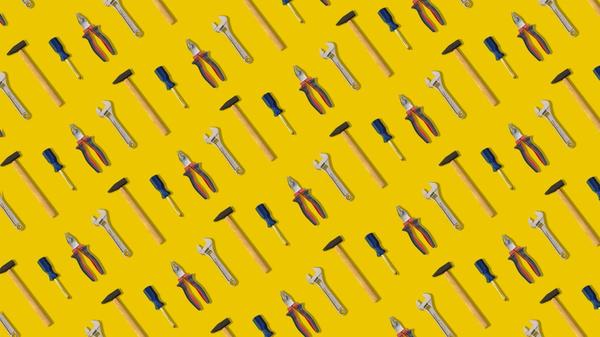Whether you're new to the world of DIY or have been upcycling IKEA furniture and fixing up your home for longer than you can remember, there are a handful of must-have DIY tools that will help bring all of your DIY projects to life.
Without them, your hands will be tied and your capacity to change anything will be greatly reduced. Whether your home improvement project is big or small, whether you're wiring a plug or hanging a shelf, it's worth getting to know both your basic hand and power tools well so that you get the most out of them. Not to mention, do a good job! From figuring out how to use your best drill to getting measurements super accurate to ensure your DIY bathroom install goes to plan, ensure these items make it into your toolbox and you'll be able to take on all manner of home improvements, with confidence.
This is a must for any DIYer so get yourself a good quality measuring tape as it’ll be a tool that ends up being used for most projects. DeWalt, which you can buy on Amazon, offers some of the best in class tape measures.
I would go for a minimum of 5 meters as this is enough to measure most rooms. There are two main types of measuring tape and they differ due to their button. Some use a button as a “push to release” the tape so you can measure or “push to hold” the tape in a fixed position when you are taking the measurement. When the tape is released it will automatically wind back to disappear into the holder.
Pro tips on using a measuring tape

Another necessary tool for any DIY is a Combi drill. A Combi Drill will be suitable for most DIY projects and it is worth getting a battery-powered one for the flexibility it allows. Most Combi Drills have a number of settings (Drill Torque & Hammer) which are used in different scenarios. Drill bits are interchangeable ends for the drill so you can use the best for the work you are doing, whether it's driving screws or putting holes in metal, wood or masonry.
Jasmine Gurney goes into detail on how to use a combi drill in a separate post, but here are your basic starting points.
Pro tips on using a combi drill:
A basic but effective tool to use is a level. Particularly useful when hanging pictures, or attaching things to walls like shelves and building furniture. The principle is very basic and has been used for centuries, where a small bubble held in a liquid will indicate something is level when it is between two marked lines.
They can be used to check if things are “level” horizontally, vertically or diagonally. The level you buy will be pre-set and ready to use without any setup. Ensure your level is large enough to span the gap or item you want to test.
Pro tips on using a level
As the name suggests, a Multitool can be used for a variety of tasks such as sawing, cutting and sanding. Essentially it is a vibrating arm with different attachments at the end that is interchangeable depending on the task. Multitools are really useful for precision cutting in awkward places or to sand an area very quickly. I find myself using mine on most of my DIY projects but be warned, they are very noisy!
Most multitools come with a basic set of attachments and can be replenished at DIY stores or online. Select the attachment that's best suited to the work you need to do.
Pro tips on using a multitool:
Stud finders are really important to use in areas where you don’t know what is behind the wall (particularly in older houses) as it will help you identify what is behind the plaster. A stud finder can be used in three main ways – firstly to identify wooden thrusts behind the wall, secondly, to identify any electrical wires and finally, to identify any plumbing pipes. This can stop you hurting yourself by drilling into live electrical wires or causing a leak. Basic stud finders are relatively inexpensive online at Amazon and DIY hardware stores.
Each stud finder will have their own way of operating but the principles are the same.
Pro tips on using a stud finder: